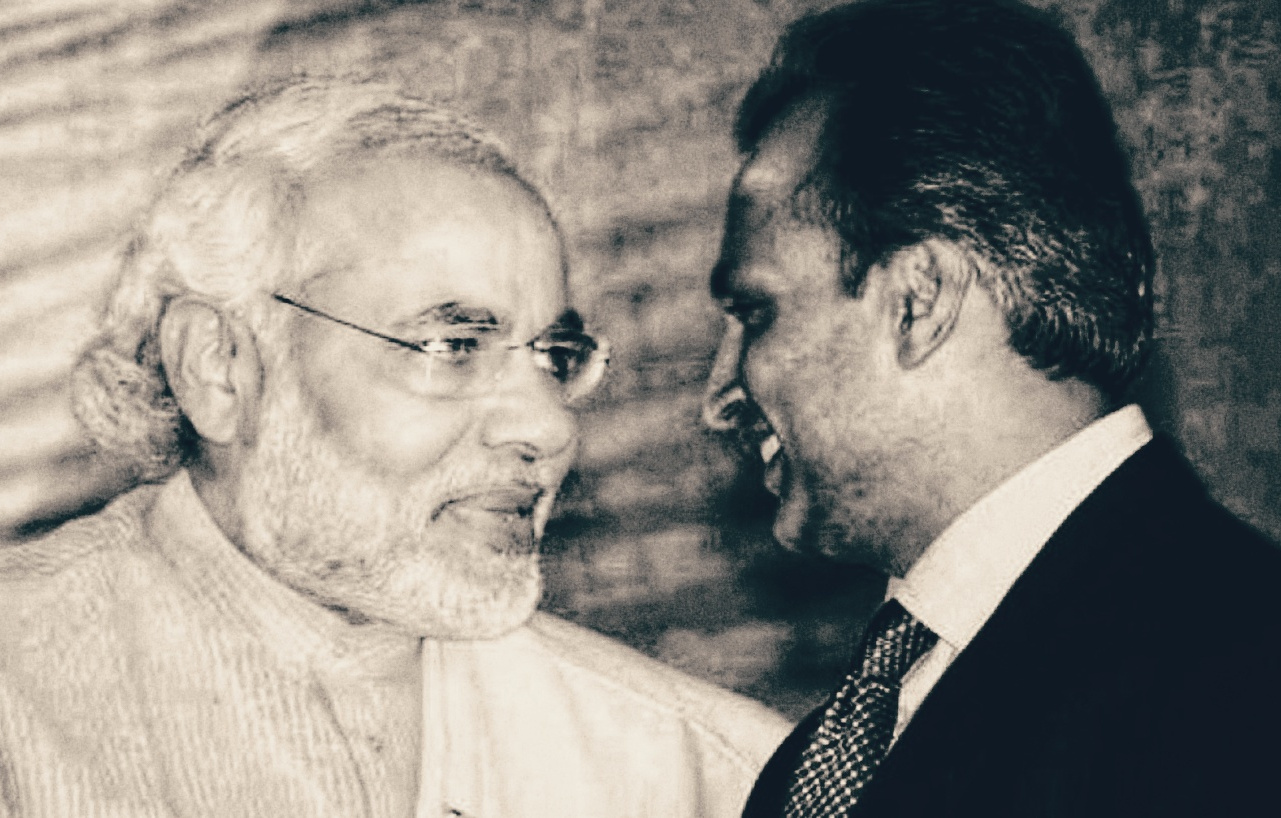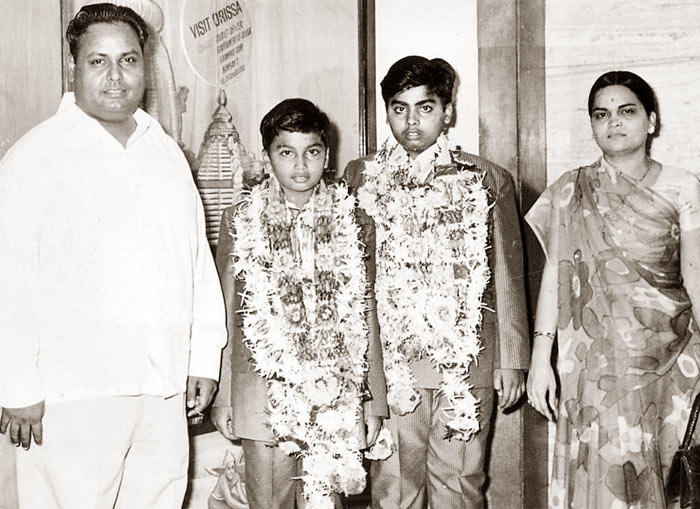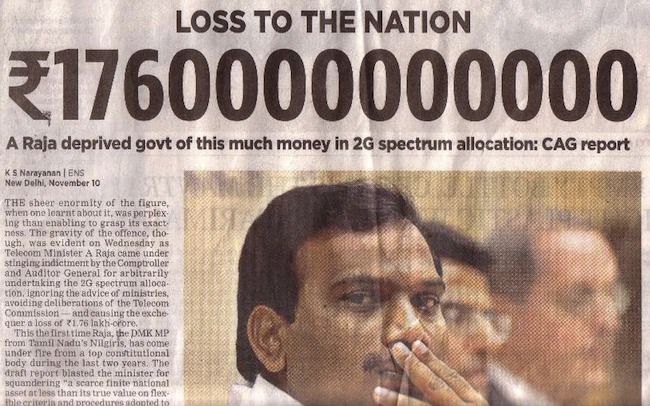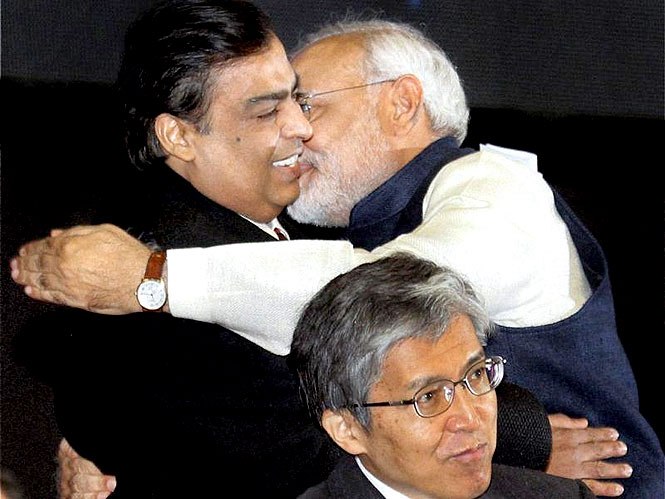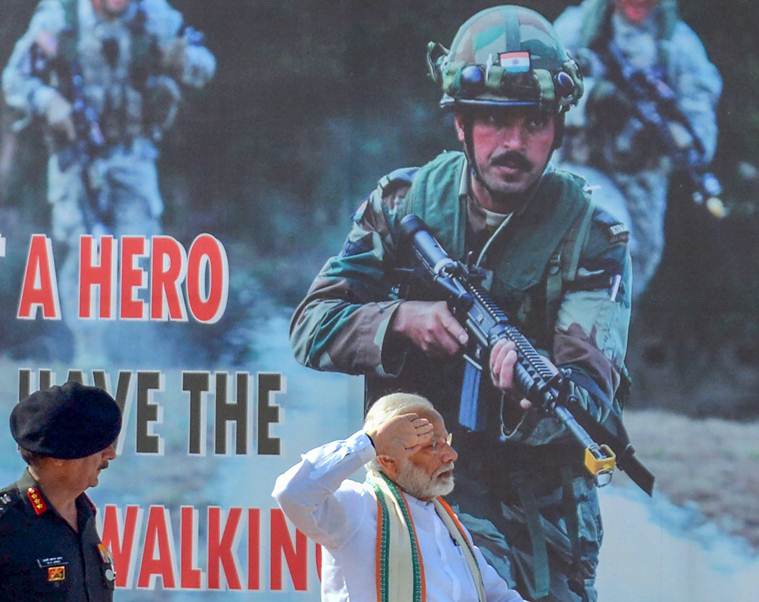The Ambani family is one of the most powerful business dynasties of this country today, influencing key economic policy decisions of the Government, independent of which party has the majority in Lok Sabha. And their sway over the country is only going to increase manifold in the years to come, with the entire Defence sector now being opened to private players. After the 2G Scam, Anil Ambani’s Reliance Group has gotten embroiled once again in the alleged “Rafale scam” – what many are describing as “Modi’s Bofors”. Instead of answering the questions however, Government asked the country to celebrate “National Surgical Strike Day” – an attempted national catharsis over military operation videos and chest-puffing “nationalism”. Siddhartha Dasgupta writes for GroundXero.
Narendra Modi Government asked the nation to observe 29th September as the “Surgical Strike Day”. Special forces of the Army had carried out “surgical strikes” on September 29, 2016, across the Line of Control (LoC). The operation was in response to a militant attack on the Army camp in Uri that had killed 19 Indian soldiers. This bizarre attempt to force celebration of a routine army skirmish at border, in Universities, colleges and schools across the country comes at a time when the Modi Government is embroiled in a fresh Defence Deal controversy. The Modi Government has been accused of corruption in the Rafale deal. One Gujarati business family and the history of it’s business empire has become central to the controversy. In what many are describing as “Modi’s Bofors moment”, Anil Ambani’s Reliance Defence was made partners in the Government contract, abruptly displacing the state-run HAL who have historically been making fighter jets for the Indian forces. Apart from being one of the prime accused in the 2G Scam, Anil Ambani’s Reliance Group is reported to be under a debt of a whopping Rs. 45000 crores. Today itself, Swedish telecom equipment company Ericsson is reported to have moved the Supreme Court asking to prevent Anil Ambani from leaving the country over dues of Rs 550 Crore. Earlier in July this year, an RTI response revealed that the amount of unpaid taxes of Anil Ambani led Reliance Energy exceeded Rs. 2000 crores (His brother Mukesh Ambani’s company Reliance Industries Limited owes more than Rs. 2500 crores in taxes to the Maharashtra Government, as revealed by another RTI). Whether there has been a “scam” in the Rafale deal or not, Modi Government’s nod to a partnership with Reliance Defence is questionable enough already. A brief look into the recent history of the Ambani business empire, specifically the journey of Anil Ambani into becoming an arms trader, and the simultaneous privatization of the Defence sector by successive Governments reveal much more than just one more scam. This history is one of public debt-ridden crony capitalist families reaping astronomical profits off the war industry, as the country’s ‘democratically’ elected Government militarises itself to the teeth while sending people into a frenzy with the drumbeats of “nationalism”, “patriotism” and war.
Empires always have innocuous beginnings
Dhirubhai Ambani Group’s Empire mainly consists of Reliance Communications, Reliance Capital, Reliance Infrastructure, Reliance Power, Reliance Mumbai Metro, Reliance Roads, Reliance Defence, and Reliance Entertainment. Dhirubhai Hirachand Ambani had begun his professional career as an employee at a petrol pump in Yemen. Later he returned to India and got into the spice trade. In the 1970s, Dhirubhai Ambani created a company called Reliance Industries. This company launched a brand of clothing called “Vimal”, which became very successful. Dhirubhai Ambani passed away on 6th July 2002, after which in 2005, his empire was divided between his two sons – Mukesh and Anil, in presence of their mother Kokilaben. Mukesh inherited the entire oil trade, the flagship Reliance Industries Limited, and the Indian Petrochemical Corporation Limited, while the younger brother Anil was given 4 other group of companies including Reliance Communications. Reliance Communications was enlisted in the Stock Exchange in 2006. Incidentally, Anil Ambani made it to the Rajya Sabha as an independent member supported by the Samajwadi Party. However, much before his Parliamentary tenure got over, in 2006 itself he resigned from his RS membership through a fax to then RS Chairman Bhairo Singh Shekhawat. In 2008, Reliance Power became a publicly listed company.
Today Anil Ambani’s companies include those in sectors such as Defence, Financial Services, Media and the Aadhar industry. According to the Forbes magazine, Anil Ambani’s net worth in (the middle of) 2018 was $ 2.3 billion. 59-year old Anil Ambani is the 45th richest Indian, according to The Forbes. According to the magazine, since the partition of their father Dhirubhai Ambani’s empire among the two brothers Mukesh and Anil, the year 2014 was the most successful year for Anil. In 2014, he owned assets worth $6.3 billion. Anil Ambani’s company Reliance Defence has many associates – such as Israel’s Rafael Advanced Defence System and France’s Dassault Aviation. Currently, Reliance Defence is constructing a factory in Nagpur for manufacturing fighter jets. So far this company has struck deals related to aircraft parts. The company has also claimed that it recently got a contract from the American Navy for maintenance of American naval ports. But serious questions have been recently raised about his company’s experience when it comes to manufacturing war equipments such as fighter jets. Some have alleged that facts about his experience in such things do not match up to the claims that the company has been making.
Recently, the ex-French President Hollande made a startling revelation that the Indian Government unilaterally decided and imposed Anil Ambani’s Reliance Defence as the offset partners in the Rs 59,000 crore Rafale deal, suggesting that the French Government had nothing to do with the decision. This statement has created a major shake-up in the Indian political establishment, and the memories of the Bofors scam have been re-ignited. If at all this is a scam as alleged, its money value is going to be way bigger than that of the Bofors deal. While we have to wait for the details of such allegations, and the investigations (if any) to take place till we get to the veracity of the claims made by the Opposition, sections of the media, and various defence experts, the current situation demands a close look at the Ambani empire and its recent history.

Courtesy: India Today
The biggest scam in the country’s history
In 2011, Anil Ambani’s Reliance Group, together with UPA ministers in power, was accused in the 2G Spectrum Scam – arguably the biggest scam in the history of India. The crux of the 2G scam was that licenses for the broadband spectrum, instead of being put through the legal tender process, were allocated to private companies by the (UPA) Government on a “First Come First Serve” basis. According to then Comptroller and Auditor General of India, Vinod Rai, the loss incurred by the state treasury (that is, the people of the country) because of the 2G Scam was around Rs. 1,76,000 crores (almost 2% of the entire country’s GDP!). Anil Ambani’s Reliance Group was the prime accused in the 2G spectrum, along with politicians and other middlemen. Although by the same old legal-political jugglary, Anil Ambani himself was declared to be a “witness” rather than an accused, and his managing director Gautam Doshi was propped up as the eternal scapegoat. Gautam Doshi, and not Anil Ambani, showed up on the list of the prime accused. Anil Ambani, we were told, would rather help the Government in the investigation against his own executives. But according to his sworn testimony before the special CBI court, Anil Ambani seemed to remember “nothing of the companies he owns, the meetings chaired by him and, incredibly enough, whether he is even a promoter in some of the companies he runs”, as reported by TheWire.
… and then, 2014
In 2014, candidate Narendra Modi became the Prime Minister of India, using the 2G Scam as one of his principal campaign weapons against what he then called the “crony capitalist” UPA Government. We know what happened to the country after that.
Ambanis and their new-found arms industry ambitions
In 2015-16, Anil Ambani bought Rs. 2082 crore rupees worth shares of the Pipavav Defence and Offshore Engineering Company, and renamed it to Reliance Defense and Engineering Limited (now Reliance Naval and Engineering Ltd). RDEL became the first private sector company in India to obtain the licence and contract to build warships, marking both the beginning of the large-scale privatisation of arms manufacturing in India and the entry of the Ambani family into this lucrative business. Anil Ambani claims that he has obtained a certificate from the Government of India to repair Master Ships.

Anil Ambani of Reliance Group (right) with Nikhil Gandhi of Pipavav Defence at the latter’s shipbuilding facility in Gujarat. Photo: PTI
On 29th March 2016, Reliance Defence issued a Press Release claiming that it has signed an arms deal worth Rs. 65000 crores with Israel’s Rafael Advanced Defence Systems Limited. Rafael is one of the 3 biggest arms manufacturers and dealers in Israel, and has been notorious for savagery on unarmed Palestinians fighting for independence (You can read a GX report in Bengali on Israel’s war on Palestine, Israeli Arms Industry, and the relations between Indian Government and US and Israeli Arms traders here). On 3rd October of the same year, Reliance Defence and France’s Dassault Aviation started a jointly owned subsidiary called Dassault Reliance Aerospace. Anil Ambani had then claimed that this joint venture will bolster the Prime Minister’s “Skill India” and “Make in India” schemes. In the same year, Reliance Communications bought Sistema Shyam TeleServices and Aircel companies. However both the companies were to separate out from Reliance Communications the following year. After this, in 2017, an important treaty was signed between the Indian and US Governments, immediately after which Anil Ambani declared that Reliance Defence and Engineering Limited had obtained a contract from the US Navy for maintaining and servicing American warships in the Indian Ocean. He claimed he got this contract on the basis of the MSRA Certificate issued to him by the Government of India. On 22 June 2017, at a Paris “air show”, Reliance Defence signed a contract with French company Daher Aerospace for fighter jet parts. On 27 October, Reliance Defence and Dassault Aviation lay the foundation stones for a factory in Nagpur to manufacture fighter jets. By the end of 2017, Reliance Infrastructure had decided to sell of its Electricity trading unit, Bombay Suburban Electric Supply to Adani Transmission. On 21st December 2017, all accused in the 2G Spectrum Scam, including Reliance Group Executives, were acquitted. Anil Ambani’s “witness” was not enough to prosecute anyone who was thought to be guilty in the case, including his own Company, even if this meant risking fundamental questions about one of the primary focus of Narendra Modi’s entire Lok Sabha campaign of 2014 – justice in the 2G Scam, punishment for the crony capitalists.

Courtesy: NDTV
The first private port, and the poster-boy of the “Gujarat Model”
The Pipavav takeover marked the official entry of the Ambani family into arms manufacturing sector. Incorporated in 1997, Gujarat-based Pipavav Defence was rechristened Reliance Naval and Engineering Ltd, after the company was acquired by Reliance. As on 31 December 2017, Reliance Defence Systems held a 30.3% stake in Reliance Naval and Engineering. Pipavav port was the first private port in India. Reliance Naval and Engineering became the first private sector company in India to obtain the licence and contract to build warships. But Anil Ambani’s takeover of Pipavav does not seem to be just another takeover. We need to take a look at the previous owner of Pipavav, and the history of alleged illegalities committed by the company.
Pipavav port was owned by a promoter called Nikhil Gandhi, who had been a chief trustee of the Bombay Port Trust, and got the land at Pipavav through Congress CM Chimanlal Gandhi. Later he got close to Dhirubhai Ambani, and was in fact seen as a front-man for Mukesh Ambani by those in the business – someone who would run his front companies. Gandhi had also been the largest shareholder to Mukesh Ambani at some point. “If Dhirubhai uncle had not helped me, I would have been dead,” Gandhi said reportedly.

Source: Economic Times
Soon enough, Pipavav port became the Pipavav Defence and Offshore Engineering Company, headed by Nikhil Gandhi. The country’s first private first port, private shipyard, first private rail way line (public private partnership), private highway, first concept of SEZ (Special Economic Zone) – Nikhil Gandhi was the poster boy of the famed “Gujarat model”. In 2011, Pipavav Defence and Offshore Engineering Company entered into a joint venture with state-owned Mazagon Docks (MDL) to build warships for the Indian Navy. “I might be baniya by birth, I would now fight like a Rajput”, he’d say while talking about his projects.
His business plan seemed to have two main buzz-words: “Private placement of equity” and “Special Purpose Vehicle”.
“Private placement of equity” refers to the process of raising money for a new company keeping the identity of the investors secret. A private placement is different from a public issue in which securities are made available for sale at the open market to any type of investor. Investors involved in private placements can include large banks, mutual funds, insurance companies and pension funds. It is a method of capital raising that does not have to be registered with the Securities and Exchange Board of India (SEBI) – the Government regulatory body to keep track of such transactions. In other words, the financial regulatory bodies have no or very little idea about these private investments – whether they are even legitimate investments or not.
A “Special Purpose Vehicle” is a subsidiary (often fake, what are called “shell companies”) company that is set up by a promoter, mainly for the purposes of getting high risk loans for a specific project – such as building a port. Due to accounting loopholes, these vehicles have proven to be a financially devastating way for Companies to hide debt. Special purpose vehicles/entities mask crucial information from investors who may not be aware of the parent company’s complete financial situation, as was the case with the Enron bankruptcy.
According to a BusinessToday report from 2008, for his flagship company SKIL Infrastructure, Gandhi planned to raise $1.2 billion through a private placement of equity and another $800 million via special purpose vehicles. On the $2 billion equity thus gathered, at least on paper, he would then raise another $4 billion of public money debt. In essence, Nikhil Gandhi’s “business plan” was to create “companies”, raise some amount of money from hidden sources, attract money from investors hiding crucial financial information about the actual parent company, and eventually use this to justify a loan from the public. The public loan would be the major portion of the investment. Notably, even till the 2008 interview where he is laying out his fundraising plans, Nikhil Gandhi had not enlisted SKIL Infrastructure – the company that promoted Pipavav port – with the SEBI.
The “Pipavav Takeover”: Beginning of privatization of India’s Defence Sector
Not surprisingly, Nikhil Gandhi has an eventful track record with legality and bad loans. In 2011, the founder chairman of Everron, another of Gandhi’s companies, was arrested on allegations of bribing an income-tax official. Earlier, The National Stock Exchange had suspended trading in a Gandhi-owned company, Horizon Infrastructure, for almost eight years, beginning March 2000, for not complying with listing agreements. Then, in September 2009, market regulator SEBI had charged key officials of KLG Capital Services, another Gandhi firm, with insider trading and barred it from the stock market. By 2015, the Pipavav Defence and Offshore Engineering Company had run into a debt of Rs. 7000 crore of public money. “Banks did not want to carry on a negative asset. They wanted the promoters to infuse more cash into the company. But the promoters were not in a position to do so,” a person familiar with the situation was reported to have said.
Gandhi eventually decided to sell his bleeding Company, attracting buyers like Anil Ambani’s Reliance Group, Mahindra and Mahindra Ltd., Hero Group and French defence company DCNS SA. According to a LiveMint report, “On 12 February, Reliance Infrastructure Ltd, part of the Reliance Group, informed BSE that it had set up three subsidiaries—Reliance Defence Systems Pvt. Ltd, Reliance Defence Technologies Pvt. Ltd and Reliance Defence and Aerospace Pvt. Ltd—to pursue growth opportunities in the defence sector.” The takeover was announced finally on 4th March, while the discussions with the other potential buyers were still “at a raw stage” according to reports. The LiveMint report then quotes an insider as saying, “Both the Munjals and Mahindras were keen on doing extensive due diligence before inking the deal. But the Pipavav promoters were not ready to wait. Then the deal was purely driven by the decision of promoters who were in the race. Ambani was willing to take a quick decision. And he was quick enough to sign the deal.” The report also says, Anil Ambani assured of immediate cash on the table. Another person familiar with the development, in fact reportedly told the LiveMint that “Reliance Group offered to pay 10% more than its rivals for the stake to Pipavav Defence shareholders”.
But why was Anil Ambani so keen on Pipavav?
On 17 February 2015, just two weeks before Reliance Infrastructure announced its takeover of an ailing Pipavav, the Cabinet Committee on Security had approved plans to build six nuclear-powered submarines and seven stealth warships at a cost of about Rs. 1 trillion. The Indian Navy reportedly started assessing the capability of Pipavav Defence, among others, to build six modern conventional submarines through technology transfer from a foreign collaborator in a deal estimated at Rs. 50,000 crore. In the larger scheme of things, India’s defence spending was expected to hit $620 billion by 2022, and the country’s upcoming private arms industry got serious about turning from a leading buyer of expensive arms into an arms supplier to rich nations. Pipavav was the footboard for the Ambanis to stake their early claims in this promising future business goldmine.

Courtesy: India Today
In 2018, Anil Ambani sold off all wireless assets of Reliance Communications, a company that also has thousands of crores of rupees of public debt, to elder brother Mukesh Ambani’s Reliance Jio in exchange for around Rs. 3000 crores. In essence, Anil Ambani buys a debt-ridden alleged shell company of Mukesh Ambani and uses that as a springboard to get the country’s first private air defence contract in cohorts with a foreign player, illegally bypassing the publicly owned HAL. In turn, Mukesh Ambani returns the favour, buying over the debts of younger brother’s wireless company, using this to establish his own Reliance Jio that was introduced in 2015 – the same year that Anil Ambani tookover Pipavav. Anil Ambani later said his 40,000 crore rupees debt-ridden Reliance Communications will henceforth completely quit the wireless communication business, and focus on real estate and defence industry in future. Ultimately, thousands of crores worth of stolen public money, referred to as “debts” or “non-performing assets” in fancier parlance, are being traded, repackaged, rebranded and then used to get further loans. Key economic sectors are being pieced up and distributed among multiple stakeholders from the same family, and it is the Government that is overseeing this process of negotiation around distribution of thousands of crores of money siphoned off from the common people, among a few members of a super-rich business family. NPAs in public sector banks increased by about Rs 6.2 lakh crore between March 2015 and March 2018.
Where is the Government in all this?
During May 2001, the Vajpayee Government opened up Defence Industry sector, which was till then reserved for the public sector, for 100% privatization with 26% Foreign Direct Investment (FDI). Within two days of taking charge, Narendra Modi, with all his talk on “nationalism”, started working on opening up the Defence Sector to 100% foreign investment and control. Finally in 2016, the country’s defence industry was opened up for 100% FDI. Modi Government has issued so far 222 licenses to private corporate sector, including the likes of Ambanis, Adanis, L&T, Pipavav Defence, etc. Last year, the Prime Minister Office asked all the 41 Ordnance Factories, the information about the name of the products manufactured, its photographs, technical description, land holding by each factories, details of plants and machinery, strength of employees etc., according to the All India Defence Employees Federation. “On 27-04-2017, the Ministry of Defence issued an order with the approval of the Defence Minister Shri Arun Jaitely, to completely outsource 143 defence equipment like Military, Vehicles, Ammunition, Ammunition boxes, Guns, Rifles, Tanks, Troop comfort items etc., which are being manufactured at present by the ordnance factories. This decision of the Govt is going to affect more than 25 Ordnance factories and about 20,000 defence employees will be thrown out of job. Again another order was issued categorizing 39 more items as “non-care” items for outsourcing”, said a statement issued by the Association, that had also announced an indefinite relay hunger fast near Parliament (Jantar Mantar) from 3rd July 2017 onwards.

Former Defence Minister Manohar Parrikar and his French counterpart Jean-Yves Le Drian exchange documents of memorandum of understanding on the purchase of Rafale combat jets, at Hyderabad House in New Delhi on September 23, 2016. PM Modi and President Hollande in the background. Courtesy: The Indian Express
We should also remind ourselves that the 2017 Finance Bill, passed as a “Money Bill” that bypasses the Rajya Sabha which is not under the control of the BJP, removed the limit of corporate contributions to political parties, and the requirement of a company to disclose the name of the political party to which a contribution has been made. 2017 was the same year when a Delhi court acquitted the Reliance Group, along with all other accused in the 2G Spectrum Scam.
On being asked on “Why sell to Reliance?”, Nikhil Gandhi reportedly said, “I need somebody who is ready to bite the bullet of the Make in India concept”. 2 years later, the only bullet that anyone really bit seems to be that of corruption. On September 21, Francois Hollande, Ex-President of France was quoted by a French journal, saying “We did not have a say in this… the Indian government proposed this service group and Dassault negotiated with (Anil) Ambani group. We did not have a choice, we took the partner who was given to us.” If this is true, that would mean that the Government chose Reliance Defence as the offset partner, replacing the traditional public-owned enterprise Hindusthan Aeronautics Limited (HAL) which have been making aircrafts for the armed forces till now.
The treaty signed between Modi and Hollande contains what is called an “offset clause” through which France will invest 30 per cent of the Rs 58,000 crores that India will pay to buy the jets, in India’s military aeronautics-related research programmes and 20 percent into local production of Rafale components. According to reports and allegations, HAL was supposed to be the “service group” or offset partner that Hollande was talking about, but all of a sudden they were replaced by Reliance Defence. Hollande alleges it was Government of India (that is, the Prime Minister as far as Hollande must be concerned) who unilaterally made the change of names.
Former chairman and managing director (CMD) of HAL, T Suvarna Raju, in an interview claimed that Dassault and HAL had signed the mutual workshare contract and given it to the government, adding that the life-cycle costs of the aircraft would have been cheaper if the aircraft were made in India, as reported by FirstPost. Even before Hollande’s revelations, allegations about the cost of the planes going up drastically compared to what was decided earlier, and simultaneous and equally drastic reduction in the number of aircrafts ordered had already sparked the fire of controversy around the entire deal. As the Congress has latched on to the controversy, hoping to finally tweet-wash its history of corruption (from Bofors to 2G), a petition has been filed at the Supreme Court asking for a stay on the deal, in which Prime Minister Narendra Modi has been named as the first respondent. PM Modi had announced the jet deal after talks with President Hollande on April 10, 2015 in Paris. Anil Ambani was part of a business delegation that travelled with the Prime Minister on that visit.
As the heat is on #Rafale and the cabinet briefing has been hurriedly called for at 8.30, this is how the #PIL against #Rafale deal is listed in the #SupremeCourt. The #PrimeMinister has been named personally as the first respondent. pic.twitter.com/UEyPR81EPC
— Utkarsh Anand (@utkarsh_aanand) September 5, 2018
Francois Hollande is also facing allegations of crony capitalism in his country. The Indian Express reported that two days before he came to New Delhi as the 2016 Republic Day chief guest and signed a Memorandum of Understanding with Prime Minister Narendra Modi for delivering 36 Rafale aircraft, Anil Ambani’s Reliance Entertainment entered into a deal to produce a film with Hollande’s partner and actor Julie Gayet. According to The Indian Express report, Anil Ambani’s Reliance confirmed that the company paid 1.48 million Euros – 15 percent of the budget of the French film Tout La-Haut, produced by Gayet – indirectly through one of its partners, French financing firm VisVires Capital. Thus, the other possible reason for Hollande’s comments is that, faced with corruption charges in his own country, in order to hide his private business transactions that were a part of the full deal, he wants to shift the entire blame on to his Indian counterpart, which is what Defence Minister Nirmala Seetharaman seemed to suggest through a press release. But still in that case Hollande’s corruption would have involved Reliance Defence.

Narendra Modi and Francois Hollande watch the flypast during 2016 Republic Day function at Rajpath, New Delhi. Courtesy: Economic Times
On August 26, 2018, Anil Ambani’s Reliance Group companies filed a Rs 5,000 crore defamation suit against the magazine ‘National Herald’, claiming an article published in the newspaper regarding the Rafale fighter deal was “libellous and derogatory”. The suit filed against Associated Journals Limited, the publisher of the National Herald, its editor in-charge Zafar Agha, and author of the article, Vishwadeepak, alleged that the article titled ‘Anil Ambani floated Reliance Defence 10 days before Modi announced Rafale deal’ was libellous and defamatory, and it “misleads the general public to believe that undue business favours are being extended to them by the government of the day”. The article conveys a “negative image” and “adversely affects the public perception” of Reliance Group and its chairman Ambani, it said, seeking damages of Rs 5,000 crore. Earlier, the Reliance Group had sent legal notices to several Congress leaders, asking them to “cease and desist” from levelling allegations against the company in connection with Rafale deal.
Lawsuits however can’t hide the fact that this was the journey of Anil Ambani, during the Modi regime – the same Narendra Modi whose key electoral plank was the crony capitalism of Congress-led UPA around 2G Scam, in which Anil Ambani was the prized asset of investigating agencies.

Anil Ambani with President Francois Hollande at the Élysée Palace in Feb. 2017 (Photo: RGA/POOL/SIPA USA/AP).
To wrap up…
The above was an account of how a bunch of Gujarati trading community people are dealing with the country’s economy and defence – some of them operating as traders, some as national leaders, and some as party chiefs. It is also clear that the Modi Government has had no intentions to rescue the country from the control of powerful families. Ambani empire keeps growing at lightning pace. The Ambani dynasty, for who “Achhe Din” have definitely been on offer on a platter, is one of the de-facto ruling dynasties of this country today, independent of who is in control of the Lok Sabha. And their sway over the country is only going to increase manifold in the years to come, with the entire Defence sector now being sold off to them and a few others.
The Rafale deal is not only the biggest defence scam of all time, the manner in which Modi abused his position to give undue benefit to Rafale & Anil Ambani & caused a loss of >35KCr to the exchequer, is a textbook case of criminal misconduct under PC Act https://t.co/qpU1W12aP3
— Prashant Bhushan (@pbhushan1) August 8, 2018
In the middle of all this, as the elected Prime Minister of the country still chooses to stay mum about the Rafale controversy, the rest of the country was asked to celebrate the “Surgical Strike Day”, in an effort to find national catharsis over burning Pakistan’s effigies. The fact that several serving and retired army officers have rebuked the Government for “politicizing” army operations have been drowned by the drumbeats of war. The Government released sensational videos from the 2016 “surgical strikes”, and made them go “viral”. Cobra-stung “media” houses screamed for hours and hours of “prime time”, reassuring everyone that they are there to protect the country and kill the enemy.
Meanwhile, behind the smokescreen, a jobless productivity-less civil-strife-torn hunger-death-ridden country’s national defence sector is being sold off to one family and its foreign collaborators, under empty meaningless phrases such as “Make in India”, “Skill India”, etc etc.
The author is a researcher and political worker.
Editor’s note: This report has sourced some information from LiveMint’s coverage of the issue (as has been indicated). Reliance Group companies have sued HT Media Ltd, Mint’s publisher, and nine others in the Bombay high court over a 2 October 2014 front-page story that they have disputed. HT Media contested the case.

